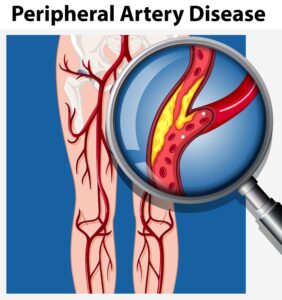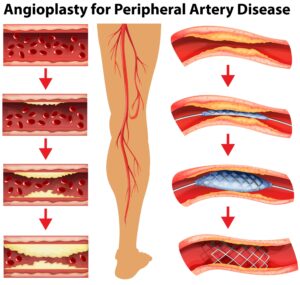Are you wondering, when should I treat PAD? This read is for you because, if you’re showing signs of Peripheral Arterial Disease (PAD), you may be scared. Chances are you’re experiencing symptoms such as leg cramps when you walk, changes in skin color, cold or numb feet, or even ulcers. 
Still, you need to understand that PAD poses a very serious risk to your health. In fact, studies show that having PAD is one of the strongest predictors for cardiovascular diseases like heart attacks and strokes (your risk for these conditions increases by as much as 80% when you have PAD.) In other words, it’s not something you ignore, or even delay addressing. Want to learn more? Just keep reading!
It's important to seek PAD treatment as soon as you notice symptoms. The most common symptom of PAD is leg cramps. They tend to appear when you're walking or exercising, and improve when you rest.
But other symptoms could mean you have PAD. Another common PAD sign is having cold feet. Now, in some cases, cold feet and hands just mean your blood flow is compromised. Other times, cold feet are a sign that narrowed arteries are restricting blood flow to your extremities. If that's the case, you need immediate PAD treatment. Otherwise, you're at increased risk for unhealing infections and even limb loss. Plus, your risk for cardiovascular disease will increase dramatically.
Cardiovascular disease impacts your heart and blood vessels. It takes many forms, including atherosclerosis (narrowing of your arteries due to the build-up of ‘plaque.’) But, basically, it encompasses four main conditions: strokes, aortic disease, coronary heart disease, and peripheral arterial disease. Cardiovascular disease is very serious. It is still the leading cause of death in the United States—meaning it’s still more life-threatening than the Coronavirus.
Given the serious nature of heart-related conditions, you must stay on top of problems like PAD. Because, according to our study, doing so could mean the difference between progressive heart disease or improved health.

In order to really reduce your risk for cardiovascular problems, participants needed to follow the American Heart Association's 7 measures for good heart health. They involving maintaining healthy cholesterol, blood sugar, and blood pressure levels. You must also exercise regularly, maintain a healthy weight, follow a healthy diet and avoid or quit smoking.
Interestingly, the study discovered that each of these seven measures is equally important. Doing just one is obviously better than nothing; but they have the highest heart-protecting power when they work together.
In other words, if you’re still deciding when to treat your PAD, the answer is: right now. Because even minimally-invasive PAD treatment offers lasting relief.
Findings presented at the American Heart Association’s Scientific Sessions 2022 reveals that restoring blood flow with an arterial stent or balloon angioplasty reduces pain and improves quality of life for patients with PAD. (We offer both these endovascular treatments in our Houston, Katy, Sugar Land, Clear Lake and the Woodlands locations.)
Recent medical advancements mean that there are now dissolving stents that can safely be absorbed by the body, reducing the risk of recurring blockages that can happen if you remove an angioplasty balloon. At the same time, it can help prevent future procedures. And, while not yet available widely, early research in the New England Journal of Medicine suggests this option could dramatically improve quality of life.
In contrast, a statement from the American Heart Association says that the quality of life toll that PAD takes on your daily life “cannot be overstated.” And the impact isn't just one you'll feel in the short-term. Why is that the case?
Once atherosclerosis limits blood flow to your legs, that’s already a sign you’ve got cardiovascular problems. And that means your car’s on the road to more serious complications. So, before you get stuck in the traffic jam leading to strokes or heart attacks, take a detour to better health.
Need help finding that off-ramp? Request an appointment with our Houston and Dallas area PAD specialistsRequest an appointment with our Houston and Dallas area PAD specialistsRequest an appointment with our Houston and Dallas area PAD specialists today. We are here to offer timely PAD treatment.
Journal of Cardiology, “Association of Trajectory of Cardiovascular Health Score and Incident Cardiovascular Disease.”

Scheduling
Please contact our dedicated specialists to schedule a consultation today.
2024 Texas Endovascular. All rights reserved. Website Design by Healthcare Success